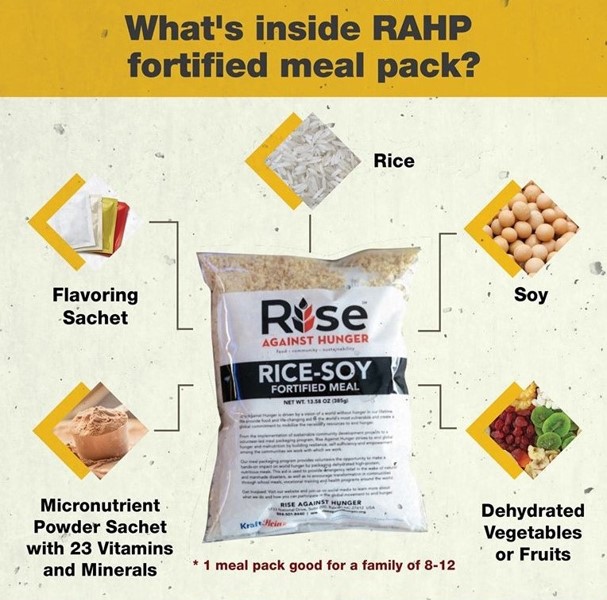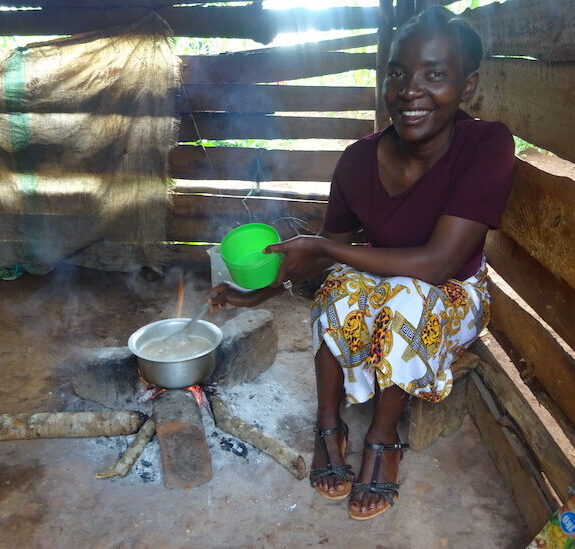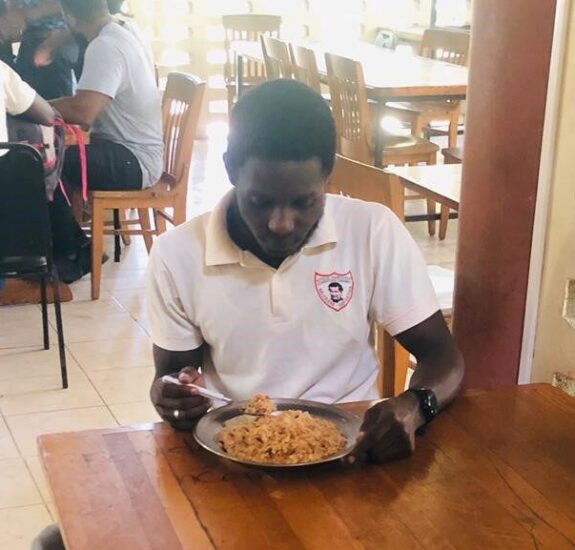

While communities work toward a future in which they can thrive, vulnerable families and individuals around the globe still have basic, immediate needs. That’s why Rise Against Hunger supports safety net programs that provide nourishment, as well as additional skills training or services that support the difficult journey out of poverty.
Rise Against Hunger meals are provided in schools to encourage increased enrollment and attendance. For adults in community empowerment programs, the provision of meals offsets productive time lost while attending training sessions. Meals distributed in hospitals and clinics may support patients’ nutritional needs and complement their treatments.

Our Meals
One in three people worldwide are adversely affected by vitamin and mineral deficiencies. Rise Against Hunger meals, packaged by volunteers, are designed to provide a comprehensive array of micronutrients. Rise Against Hunger meals include enriched rice, soy protein, dried vegetables and 23 essential vitamins and nutrients.
The Stages of Life for a Rise Against Hunger Meal
Next to maize, rice is the most commonly consumed grain with regard to human nutrition and caloric intake. Along with soy or lentil proteins, vegetables and vitamins; rice is the fourth and final ingredient in our meals.
The rice we use is sourced locally whenever possible, and transported to one of our locations around the world. From there, staff store and inventory the rice along with the other meal ingredients.
Volunteers come together to package meals for those in need. Rice and other dry ingredients are combined into a meal bag that, with water, becomes a highly nutritious vegetarian meal.
Meals are packaged into boxes at volunteer events. Boxes are returned to Rise Against Hunger warehouses and stores until they are ready to ship internationally to programs that serve the hungry.
The boxes of completed meals, packed inside a shipping container, leave a warehouse and make their way across the sea to one of the countries where our Impact Partners operate their programs.
Our Impact Partners transport the meals safely from the ports to their program sites. The meals can travel thousands of miles before they reach their final destination for fair distribution at schools, orphanages, clinics or vocational centers.
Rise Against Hunger meals have a two-year shelf life, allowing them to travel long distances and be served for many months. We work with our Impact Partners to determine the number of meal shipments they will need each year.
When we provide meals to our Impact Partners, we include instructions on hygiene and safe cooking practices. Most locations customize the meals into local dishes that are suited to the regional palate. Meals are often accompanied by local vegetables or protein, depending on availability.
Rise Against Hunger meals are served in schools, vocational training programs, medical clinics, maternal health facilities, child and youth development centers and elder care facilities. Preparing and cleaning up after meals becomes a lesson in life skills for students in many partner schools.
School meals attract children to education programs and prevent dropouts–especially among girls–while simultaneously alleviating short-term hunger and enabling children to learn and to break the cycle of poverty. Providing Rise Against Hunger meals in community empowerment programs enables participants to gain new skills without losing income or the equivalent.
Host a Meal Packaging Event
Rise Against Hunger’s meal packaging events give volunteers hands-on experience in leadership development, team-building, relationship-building, creative problem-solving, and goal-setting and achievement.


